 W
WThe aruval, is a type of billhook machete from southern India, particularly common in the Indian states of Tamil Nadu and Kerala. It is used both as a tool and a weapon. Tamils reserve the weapon as a symbol of karupannar. In popular culture, it is sometimes associated with gangsters. In movies, it is used as a weapon of choice. In Kerala, its primary use is for agriculture, mainly in coconut cutting, clearing pathways, cutting wood and other uses.
 W
WThe bagh nakh, vagh nakh, or vagh nakhya is a "fist-load, claw-like" weapon, originating from the Indian subcontinent, designed to fit over the knuckles or be concealed under and against the palm. It consists of four or five curved blades affixed to a crossbar or glove, and is designed to slash through skin and muscle. It is believed to have been inspired by the armament of big cats, and the term bagh nakh itself means tiger's claw in Hindi.
 W
WA bhuj is a type of knife or dagger from Sindh and Gujarat. It is commonly called an axe-knife, because the blade is fixed onto an axe-like haft. The weapon takes its name from the city of Bhuj in the Kutch district of the state of Gujarat, where it originated, though it may have also originated in Sindh. The bhuj is short, broad, stout, and heavy, with a mild curve. It often sports an engraved and gilded mount, inlaid haft and decorated knob. This knob is typically a stylized elephant head, giving the weapon the nickname elephant knife. The short re-curved blade measures 7-10 inches long, and its copper sheath makes the weapon 20 inches long in total. It is mostly single-edged, except for a slight rear edge at the tip. The blade is mounted at a right angle to a metal haft in a manner similar to a long axe. The haft is sometimes hollow, concealing another small stiletto-like dagger. The weapon is similar to the Punjabi gandasa or the European glaive. The weapon was popular among the Sindhi cavalry of the Soomra and Samma dynasties of Sindh.
 W
WThe bichuwa or bichawa is a dagger, originating from the Indian subcontinent, with a loop hilt and a narrow undulating sharp blade. It is named for its resemblance to the sting of a scorpion, for which the Hindi name is bichuwa. The weapon was based on the maduvu, or horn dagger created in South India, and many bichuwa have blades which retain the shape of buffalo horns. Early examples of the bichuwa come from the medieval southern empire of Vijayanagara. Being relatively easy to make, the bichuwa has persisted into the 20th century as a decorative dagger.
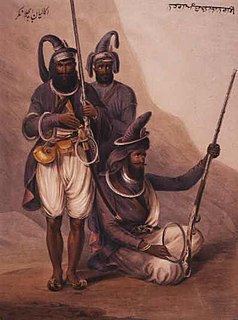 W
WChakram is a throwing weapon from the Indian subcontinent. One of its major purposes is to protect the turban and the head from sword/melee attacks. It is circular with a sharpened outer edge and a diameter of 12–30 centimetres (4.7–11.8 in). It is also known as chalikar meaning "circle", and was sometimes referred to in English writings as a "war-quoit". The Chakram is primarily a throwing weapon but can also be used hand-to-hand. A smaller variant called chakri is worn on the wrist. A related weapon is the chakri dong, a bamboo staff with a chakri attached at one end.
 W
WThe firangi (Marathi:फिरंगाना) was an Indian sword type which used blades manufactured in Western Europe, particularly Solingen, and imported by the Portuguese, or made locally in imitation of European blades.
 W
WThe gada is a mallet or blunt mace from the Indian subcontinent. Made either of wood or metal, it consists essentially of a spherical head mounted on a shaft, with a spike on the top. Outside India, the gada was also adopted in Southeast Asia, where it is still used in silat.
 W
WA slingshot is a small hand-powered projectile weapon. The classic form consists of a Y-shaped frame held in the non-dominant hand, with two natural-rubber strips or tubes attached to the upper two ends. The other ends of the strips lead back to a pocket that holds the projectile. The dominant hand grasps the pocket and draws it back to the desired extent to provide power for the projectile—up to a full span of the arm with sufficiently long bands.
 W
WThe katar or katara is a type of push dagger from the Indian subcontinent. The weapon is characterized by its H-shaped horizontal hand grip which results in the blade sitting above the user's knuckles. Unique to the Indian subcontinent, it is the most famous and characteristic of Indian daggers. Ceremonial katars were also used in worship.
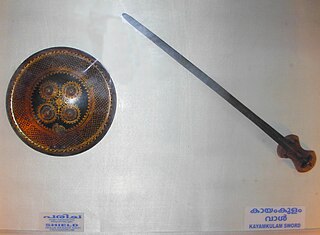 W
WKayamkulam vaal is a double-edged sword that was used by the rulers and soldiers of Nair aristocracy, in the Kayamkulam princely state of India. An example is on display at the Krishnapuram Palace Museum in Kayamkulam.
 W
WThe khanda is a double-edge straight sword originating from the Indian subcontinent. It is often featured in religious iconography, theatre and art depicting the ancient history of India. It is a common weapon in Indian martial arts. Khanda often appears in Sikh, Jain, Buddhist and Hindu scriptures and art.
 W
WThe kirpan is a sword or a knife of any size and shape, carried by Sikhs. It is also part of a religious commandment given by Guru Gobind Singh in 1699, in which he gave an option to the Sikhs, if they accepted they must wear the five articles of faith at all times, the kirpan being one of five Ks.
 W
WThe Maduvu, also known as a maru or madu, is a weapon from India. It is one of the many weapons used in the Tamil martial art Silambam.
 W
WA Malappuram kathi is a kind of dagger, originating from the Indian subcontinent, developed by few blacksmith families of Malappuram from Malabar region of Kerala in ancient times. The dagger is unique in its physical appearance and features, as it has a very light-weight holder made of deer antler. The blade is thicker on the top and very sharp and lines at the bottom. The blade continues to the handle and covers the handle in a small single strip. The dagger is 18–25 inches (46–64 cm) long.
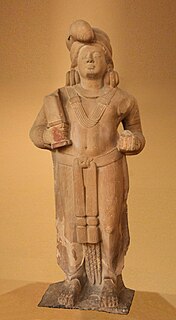 W
WA Mudgar is a type of "Gada" mace from India, and it is generally considered to be made of wood, but can also be made of iron.
 W
WMughal weapons significantly evolved during the ruling periods of Babur, Akbar, Aurangzeb and Tipu Sultan. During its conquests throughout the centuries, the military of the Mughal Empire used a variety of weapons including swords, bows and arrows, horses, camels, elephants, some of the world's largest cannons, muskets and flintlock blunderbusses.
 W
WNirbheek is a 6-shot cylinder double-action revolver designed and manufactured by the Ordnance Factories Organization in Kanpur, India. It was sold at INR 122,360.00 or $USD2,000.00.
 W
WParashu is the Sanskrit word for battle-axe which can be wielded with one or both hands.
 W
WThe pata or patta is a sword, originating from the Indian subcontinent, with a gauntlet integrated as a handguard. Often referred to in its native Marathi as a dandpatta, it is commonly called a gauntlet-sword in English.
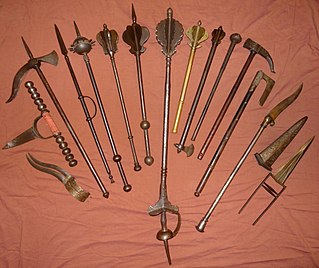 W
WThe saintie is an Indo-Persian parrying spear. It is a staff weapon that can be used both for offensive and defensive purposes. They have been produced since the 16th century and were used up to the 19th century. The use of saintie is extremely scarce today.
 W
WTrishula or trishul is a trident, a divine symbol, commonly used as one of the principal symbols in Sanatana Dharma. In India and Thailand, the term also often refers to a short-handled weapon which may be mounted on a daṇḍa. Unlike the Okinawan sai, the trishula is often bladed. In Indonesian, trisula usually refers specifically to a long-handled trident while the diminutive version is more commonly known as a cabang or tekpi.
 W
WUrumi is a sword with a flexible, whip-like blade, originating in modern-day Kerala in the Indian subcontinent. It is thought to have existed from as early as the Sangam period.
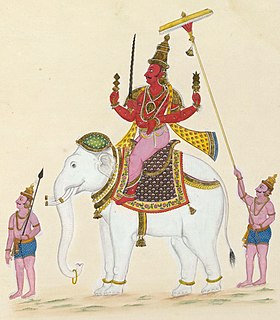 W
WA vajra is a ritual weapon symbolizing the properties of a diamond (indestructibility) and a thunderbolt.
 W
WA valari is a thrown wooden or iron weapon used primarily by the Tamil people of the Indian subcontinent. The valari is used for protecting cattle from predators, and for war and hunting. Valaris are described in the Tamil Sangam Purananuru.
 W
WVel is a divine javelin (spear) associated with Murugan, Hindu war God also known as Vel Murugan. Spears used by ancient Tamils in warfare were also commonly referred to by this name. "Vetrivel! Veeravel!" was a commonly used battle cry by ancient Tamil kings and soldiers.